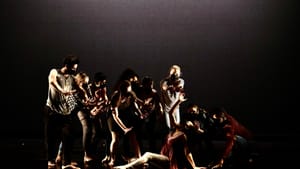Stay in the Loop
BSR publishes on a weekly schedule, with an email newsletter every Wednesday and Thursday morning. There’s no paywall, and subscribing is always free.
Dancing through trauma
Sarah Carlson and Vernon J. Mobley present The Body Keeps the Score

Trauma can feel isolating, but it is incredibly common. According to the National Council on Behavioral Health, 70 percent of American adults have experienced at least one traumatic event. The upside is that more and more people are learning about where trauma comes from, what it looks like, and how to heal. Psychiatrist and researcher Bessel van der Kolk’s 2014 book The Body Keeps the Score: Brain, Mind, and Body in the Healing of Trauma has helped to spread the word. The book demonstrates that trauma changes the body and brain. It also explains the benefits of treatments that incorporate both mind and body, such as yoga. An original work by choreographer Sarah Carlson and composer Vernon J. Mobley builds upon van der Kolk’s ideas. The Body Keeps the Score: Dancing with Trauma and Recovery harnesses the power of movement and sound to explore trauma and healing.
Mind, body, and soul
The work is a collaboration between Carlson, artistic director of DanceLink, and Mobley, a multi-instrumentalist and composer. DanceLink is a project-based company that explores what Carlson describes as “life’s big questions.” She previously collaborated with Mobley on What Lies Within: Dancing with Race & Identity, a work of dance theater that explores race, identity, and oppression. After What Lies Within, Carlson read van der Kolk’s book.
Carlson said the book emphasizes that “trauma lives in the body; trauma is embodied. To heal trauma, we need to heal the body.” Dance is an embodied art form, she added. After reading van der Kolk’s work, “I came to understand … that trauma is a spectrum,” Carlson notes. “We’ve all suffered a form of trauma in our lives, and we all survive through it and create patterns of resilience.”
The Body Keeps the Score: Dancing with Trauma and Recovery brings these ideas to life through music and movement. The work is personal for Carlson and Mobley. Though Carlson didn’t think of herself as having trauma, she recognized the symptoms in van der Kolk’s book. But trauma did not resonate with Mobley until he dealt with health issues after his father’s death. “I had not had a major traumatic experience until this,” Mobley said. Later, he was able to connect his experience to van der Kolk’s book and the dancers’ movement.
Carlson aims to make her dances relatable by using “less technical, more pedestrian movement” that allows her to work with dancers of a variety of different backgrounds. She described The Body Keeps the Score as “a mix of improv structures and set movement,” with both choreographed and improvised sections. Carlson’s approach and dancers’ contributions foster “authentic movement.”
Steps to healing
The work contains 13 sections that address various aspects of trauma. In one, a dancer portrays a “robotic” numbed-out person. When a group of others surrounds him, the members do not respond to the distressed person. Instead, “they pressure him to keep it together,” Carlson said. A group dance called “Fight or Flight” repeats structured segments called “trauma solos.” Carlson developed the trauma solos from creative tasks she assigned the dancers. “Fight or Flight” portrays the view from both inside and outside of the group. It demonstrates how “we get pulled into the energy of those around us,” such as when one dancer’s trauma solo draws in others nearby.
Visualizing portions of the dance as Carlson described it, I shivered in recognition of the images and their power. The Body Keeps the Score also includes a section that explores the cycle of oppression that marginalized people face. In doing so, Carlson and Mobley take things beyond van der Kolk’s book and into conversations about the impacts of systemic racism.
“It’s a powerful performance,” Carlson said, and “it’s not always easy to watch.” Yet, “we sweep this under the carpet at our own peril.” At the same time, it shows that healing is possible. “The show provides a safe space to realize you are not by yourself” in dealing with trauma, Mobley noted. The Body Keeps the Score is art on a topic that is as timely as it is relatable. A talkback with a panel of experts that includes clinicians and trauma professionals follows the performance.
What, When, Where
The Body Keeps the Score: Dancing with Trauma and Recovery. Choreography by Sarah Carlson, composed by Vernon J. Mobley. $26-$29. Thursday, February 8, 2024, at 7:30pm, Musikfest Café, ArtsQuest Center, 101 Founders Way, Bethlehem. steelstacks.org.
Sign up for our newsletter
All of the week's new articles, all in one place. Sign up for the free weekly BSR newsletters, and don't miss a conversation.

 Melissa Strong
Melissa Strong